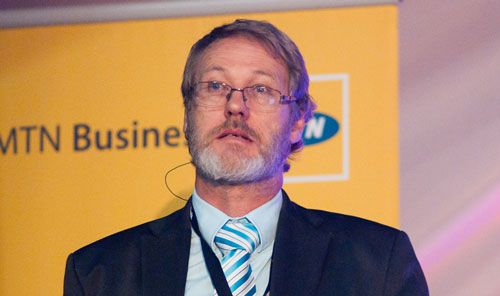
Telkom could pay as much as R885m/year more in spectrum licence fees if new proposals by the Independent Communications Authority of SA (Icasa) are adopted.
Under Icasa’s proposed new fee structure, Telkom and other bulk users of spectrum — they include Transnet, Eskom, the SA National Defence Force and the SA Police Service — will see a huge jump in the money they’d have to fork over to use scarce frequencies.
Icasa reckons that under the proposed new fees, Telkom will have to pay R922,5m/year, up from just R37,5m now. Transnet’s fees will increase from less than R1m/year to R30,1m and the defence force will have to cough up R29m extra for a total annual bill of R35,1m. The police bill will rise from R5,9m/year to R27,3m.
The authority has proposed big changes in the way spectrum fees are applied in a move that will mean some entities pay much more than they are now. It hopes the move will discourage spectrum hoarding, where licensees have access to spectrum but don’t use it.
“Spectrum is regarded as a scare resource and a national asset,” says Icasa councillor William Stucke.
Some entities will pay less for spectrum, while most will pay about the same under the new proposals.
Historically, spectrum scarcity was exacerbated by inefficient technology, poor administration and the fact that certain bands are more popular than others due to their propagation characteristics and the availability of equipment. Thanks to technological advances, these impediments are being overcome.
The proposed fees for the use of spectrum for telecommunications are designed to reduce hoarding. Stucke says no fees are in place for broadcasters but these are likely to follow.
Icasa will use two formulae to calculate fees for spectrum use. The first relates to point-to-point systems; the second concerns point-to-multipoint systems.
The formula for the fee for point-to-point connections will be calculated as the base unit (cost per megahertz), multiplied by the following factors: the bandwidth used; the frequency band (whether high or low frequency); whether the spectrum in question is deemed in high demand or not; whether it is for use in rural or metropolitan areas and whether the user is exclusive or shares the band with another entity; whether the proposed use covers a minimum distance stipulated by Icasa; and whether the spectrum is being used unidirectionally or bidirectionally.
The formula for calculating the fee for point-to-multipoint spectrum users is identical, except that there’s a measurement of how much coverage (in square kilometres) the licensee intends providing.
Because higher frequencies have a shorter useful range, Icasa has opted to make access to these cheaper. The authority will identify which bands are considered congested and will calculate the congestion factor on this basis.
The geographical factor depends on where spectrum is used. “It’s 10 times more expensive to use spectrum in Johannesburg than it is in Putsonderwater,” says Stucke. “If any portion overlaps one of these areas, then the higher rate applies.”
Spectrum can be assigned as “exclusive” or “shared”. When exclusive, Icasa is responsible for ensuring there is no interference in that allocation. When spectrum is shared, then the sharing parties are responsible for coordinating among themselves to avoid interference. Where two parties share spectrum the multiplier for the fees calculation will be halved.
Stucke says Icasa will engage with the telecoms sector about the proposed fees and licensees interested in gaining access to a particular portion of spectrum should consider carefully the suggested terms to find the most economically viable method of achieving their aims. — Craig Wilson, TechCentral
- Subscribe to our free daily newsletter
- Follow us on Twitter or on Google+ or on Facebook
- Visit our sister website, SportsCentral (still in beta)




